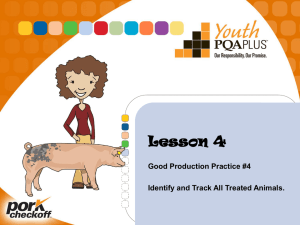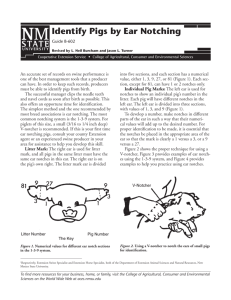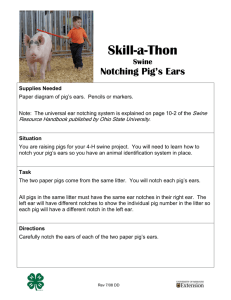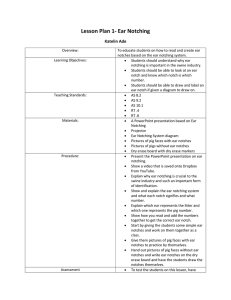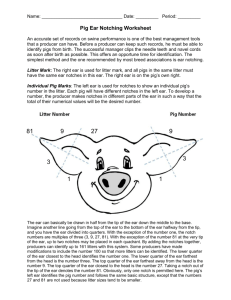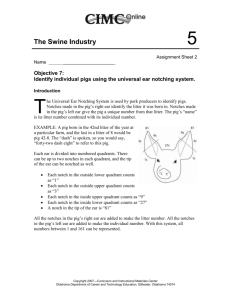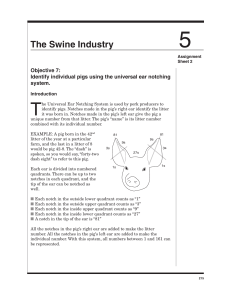Notes for this unit
advertisement
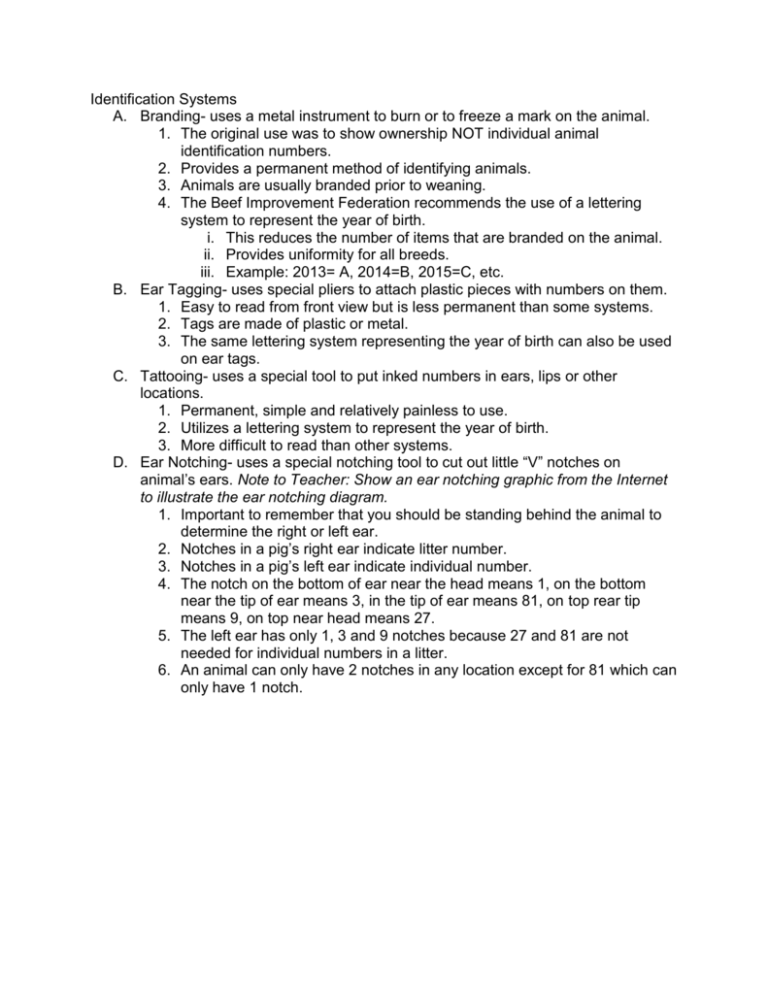
Identification Systems A. Branding- uses a metal instrument to burn or to freeze a mark on the animal. 1. The original use was to show ownership NOT individual animal identification numbers. 2. Provides a permanent method of identifying animals. 3. Animals are usually branded prior to weaning. 4. The Beef Improvement Federation recommends the use of a lettering system to represent the year of birth. i. This reduces the number of items that are branded on the animal. ii. Provides uniformity for all breeds. iii. Example: 2013= A, 2014=B, 2015=C, etc. B. Ear Tagging- uses special pliers to attach plastic pieces with numbers on them. 1. Easy to read from front view but is less permanent than some systems. 2. Tags are made of plastic or metal. 3. The same lettering system representing the year of birth can also be used on ear tags. C. Tattooing- uses a special tool to put inked numbers in ears, lips or other locations. 1. Permanent, simple and relatively painless to use. 2. Utilizes a lettering system to represent the year of birth. 3. More difficult to read than other systems. D. Ear Notching- uses a special notching tool to cut out little “V” notches on animal’s ears. Note to Teacher: Show an ear notching graphic from the Internet to illustrate the ear notching diagram. 1. Important to remember that you should be standing behind the animal to determine the right or left ear. 2. Notches in a pig’s right ear indicate litter number. 3. Notches in a pig’s left ear indicate individual number. 4. The notch on the bottom of ear near the head means 1, on the bottom near the tip of ear means 3, in the tip of ear means 81, on top rear tip means 9, on top near head means 27. 5. The left ear has only 1, 3 and 9 notches because 27 and 81 are not needed for individual numbers in a litter. 6. An animal can only have 2 notches in any location except for 81 which can only have 1 notch.
